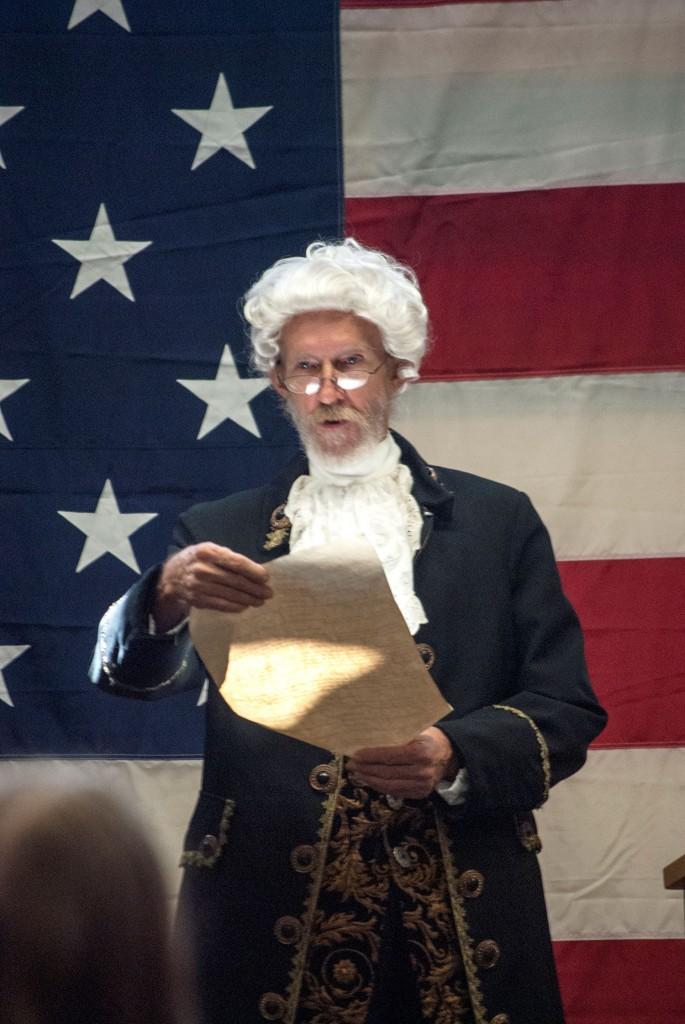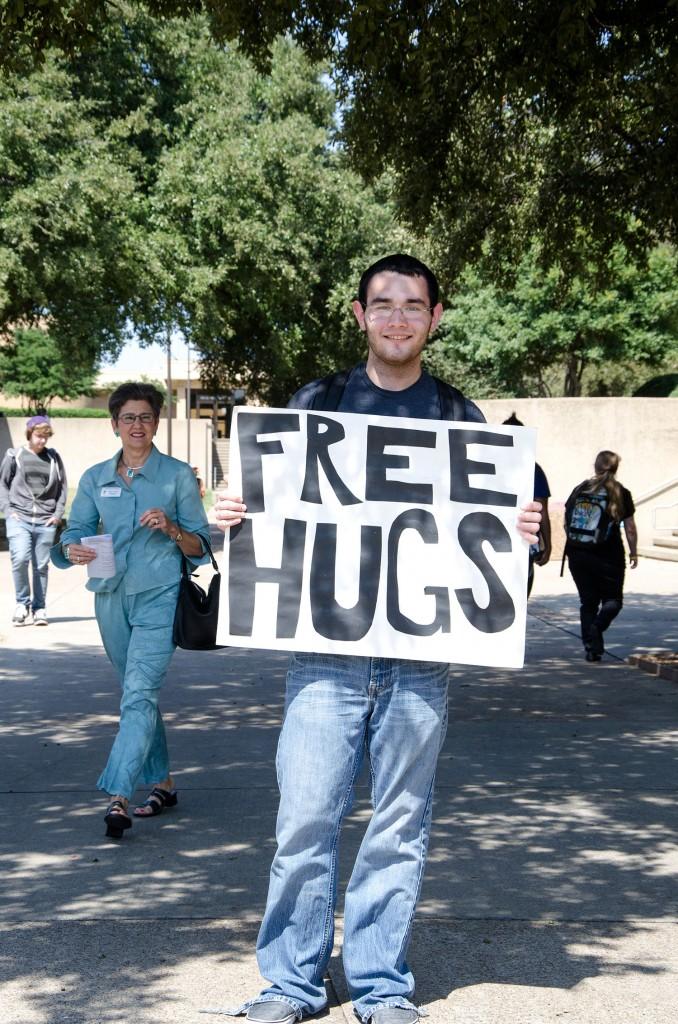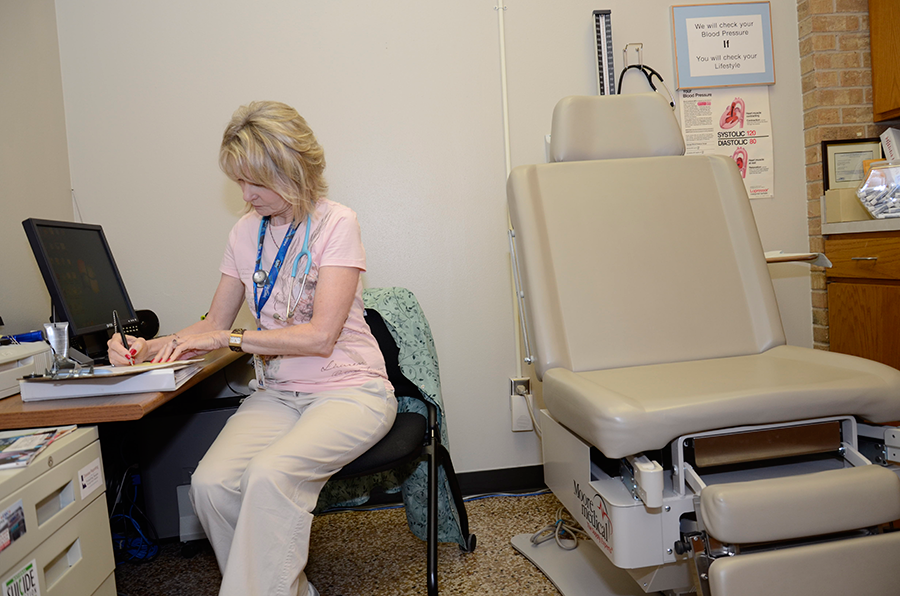By Kelli Henderson/entertainment editor
Everyone has a story. And many students strolling the halls at TCC choose to tell their story in the form of tattoos.
Throughout history, tattoos have been seen and used as many things. Christians used crosses in the Crusades to signify the type of burial to use if they were killed in battle. The Romans once used them to mark criminals and then chose the branding for warriors. And poor Japanese rebels would cover their bodies with intricate symbols, before becoming illegal, in response to being banned from wearing kimonos.
But why tattoo now?
“It’s body art, basically,” said SE and NW

Jordan Hess/The Collegian
student Leon Tye. “It’s like having walls around your house with no art on them. They’re just boring. Put some art on them, and then the room looks a lot better.”
Tye has four tattoos and received his first when he was 18. He has a tribal band around his right arm and a tribal shoulder piece that goes from his left shoulder down his back and across his chest, both symbolizing the warrior inside him. He has a cross on his back for his faith, and he has a bald eagle ripping through American flag-colored flesh on his arm for his love of America.
Lauren Rebosio, a NE nursing student who loves dance, has three tattoos. Her first tattoo is a butterfly made out of music notes and treble clefs with a trail of music notes behind it. She got the butterfly at 18 and put it on a foot she broke while dancing. She has a sea turtle with flowers on her shoulder for her love of sea life and Florida. And she has a rose on her hip with a banner that says dance with ballet shoes hanging from the banner.

Tattoos are a way of communicating to the world a person’s dreams and hobbies, Rebosio said.
“I think it’s because when you are young, you have a lot of inspiration and motivation, and certain things will drive somebody to do something,” she said. “So, for example, if I want to be a dancer, I am going to be motivated by that and inspired. And because of inspiration, I think that is something people go forth and get ink done.”
NE student Ashton Quincey has three tattoos. At age 15, he got “Made in Japan” on his back because he was born there and it seemed fun and unexpected. His second is “KAP” on his right hip. The tattoo plays off the word “captain, “for always wanting to be a leader, a love of pirate ships and his band Krash Rover. And the third is a sparrow on the right side of his chest.
Quincey said he believes students get tattoos because of the influences in their lives.
“If they haven’t had one, then all they can see is all these other people, rock stars and hip-hop artists, all of these influences that are kind of giving them that drive of ‘Oh, tattoos are cool,’” he said.
Though prevalent in college, tattoos tend to be a gamble in the workplace. NE art associate professor Andrew Stalder said he used to believe that many would be shunned for having ink, but he doesn’t think that is the case in every field.
 “Since I started getting tattoos at a time when a lot of people weren’t, I have always felt that I needed to reassure people that just because I decided to get a tattoo, it didn’t mean that I was a criminal, or stupid, or a drug addict, or any other silly stereotypical thing that may have been associated with tattoos,” he said. “I don’t feel that so much any longer since it is now such a socially acceptable thing to do. That said though, I would still warn someone that it is a distinct possibility that a potential employer could be turned off by their appearance. You can’t expect that in every single situation, it is going to be appropriate to have multiple face piercings or face tattoos like Mike Tyson’s. I mean, there are limits.”
“Since I started getting tattoos at a time when a lot of people weren’t, I have always felt that I needed to reassure people that just because I decided to get a tattoo, it didn’t mean that I was a criminal, or stupid, or a drug addict, or any other silly stereotypical thing that may have been associated with tattoos,” he said. “I don’t feel that so much any longer since it is now such a socially acceptable thing to do. That said though, I would still warn someone that it is a distinct possibility that a potential employer could be turned off by their appearance. You can’t expect that in every single situation, it is going to be appropriate to have multiple face piercings or face tattoos like Mike Tyson’s. I mean, there are limits.”
Stalder, who has 11 tattoos plus his Japanese sleeve, said he started getting tattoos when few besides bikers sported the trend.
“I got my first tattoo … around 1989 when I was 19,” he said. “A friend of mine and I went to this really sketchy place on Harry Hines Boulevard in Dallas. It was basically a trailer that I am pretty sure this guy lived in as well. Tattoo parlors have come a long way since then to say the least.”
And just like any trend, there seems to be an unwritten camaraderie between those with tattoos.

Jordan Hess/The Collegian
“I have no idea if they [students] look at me differently than they would if I didn’t have tattoos,” Stalder said. “They [tattoos] are such a part of me at this point that I couldn’t imagine myself without them. They are who I am at this point. I have found that students will stop by my office all the time to ask me about them. If anything, I think it makes me more approachable as they can relate to having tattoos and being around people who do.”
For many students, it is not the choice of what to get that is difficult or even the decision to put something permanent on their body. What causes many people to hesitate is hearing the tall tales of how painful the process can be.
Tye said, though it feels different and can hurt in some places, the body actually can get used to

Jordan Hess/The Collegian
the feeling.
“It’s crazy to say this, but your body actually adjusts to the pain, and you have a natural painkiller inside your body that releases right to that spot, so it actually numbs the spot,” he said.
Quincey said he advises anyone contemplating the decision to just be original. He said the best tattoos do not come off the hanging pictures in the parlors but a memory from a past with a loved one or something that is special.
“Use your creativity and actually put yourself into it and not what other people are also getting,” he said. “Get your own idea on your story. There is no point in bringing somebody else’s story onto your bodyboard.”
But no matter what, Quincey said, people should do what is right for them because tattoos show what they believe in and where they come from.
“Some people believe that tattoos are against their religion,” he said. “But if you believe your body is actually the journal and it’s just the ink going on top of it to tell your story, then you’re going to get one. I believe that.”


























